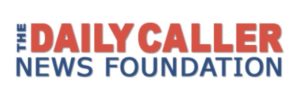President Donald Trump claimed during a rally in Tupelo, Mississippi, that health care premiums are decreasing.
“We’ve taken bold action to reduce the cost of health insurance. For the first time in years, health care premiums are coming down,” he said Nov. 26.
Verdict: True
After years of double-digit increases, average premiums for benchmark Obamacare plans are projected to decrease 1.5 percent in 2019. While Trump has taken credit for the drop, many experts say premiums would have been even lower were it not for actions taken by the Trump administration.
Fact Check:
The federal exchange set up under the Affordable Care Act (ACA), more commonly known as Obamacare, offers health care plans to consumers in 39 states. Plans are grouped into four tiers – bronze, silver, gold and platinum – that provide coverage at different price points. Silver plans, which cover 70 percent of a typical patient’s costs, are by far the most popular.
The Centers for Medicare and Medicaid Services (CMS) announced in October that the average monthly premium for the second-lowest-cost silver plan, considered to be a benchmark plan for tax subsidies, will drop to $406 in 2019, a 1.5 percent decrease over 2018 levels. CMS figures are for a 27-year-old single nonsmoker.
Tennessee will experience the largest decrease – 26.2 percent – while premiums in North Dakota are projected to rise 20.2 percent.
Independent groups that project marketplace premiums have come to similar conclusions. The Kaiser Family Foundation (KFF) found that premiums in many parts of the country will hold flat or decrease in 2019. Avalere Health estimates that, across all health plans on the individual market, average statewide premiums will only increase 3.1 percent.
These figures stand in stark contrast to the double-digit increases witnessed in recent years. Nationally, average monthly premiums for the benchmark plan rose 25.4 percent in 2017 and 36.9 percent in 2018, according to CMS. An analysis from the Department of Health and Human Services (HHS) found that, on average, monthly premiums in the individual market increased 105 percent from 2013 to 2017 in the 39 states using the federal exchange.
The number of insurers on the exchange will also increase for the first time since 2015. For 2019, there are 23 more insurers participating during open enrollment, and the number of counties with only one insurer will drop from 56 percent to 39 percent.
Like other members of the Trump administration, HHS Secretary Alex M. Azar II has credited the president for the drop in premiums. “The president who was supposedly trying to sabotage the Affordable Care Act has proven better at managing it than the president who wrote the law,” he said in September.
CMS Administrator Seema Verma cites the administration’s approval of innovation waivers that allow states to subsidize insurers for the cost of expensive medical bills. These subsidies are known as reinsurance – or “insurance for insurers” – and are projected to substantially decrease premiums in several states.
“These waivers appear to be working,” Verma wrote in an op-ed for Fox News. “For example, Wisconsinites will see their individual market premiums decrease by an average of 11 percent due to the waiver.”
But others have suggested that actions taken by the Trump administration have destabilized the federal marketplace.
In August, HHS released a final rule that expanded the availability of short-term health care plans for consumers. The plans don’t have to meet Obamacare minimum coverage requirements, making them a cheaper alternative to the ACA-compliant insurance plans offered on the exchange. Analysts predict that healthy, young people will choose these plans instead, leaving a sicker, more expensive pool of consumers for ACA-plans to cover.
“Plans with ACA consumer protections will still exist. But, the premiums for those plans will rise as short-term plans cherry pick healthy people,” Larry Levitt, a senior vice president at KFF, said in a tweet. “ACA enrollees eligible for subsidies will be protected, but middle-class people with pre-existing conditions will feel the full brunt.”
Analysts have also predicted that the GOP tax law, which, starting in 2019, zeroes out the individual mandate penalty for Americans who do not have health insurance, will have the same effect – disincentivizing healthy people from participating in ACA health plans.
The Trump administration also ended federal payments for cost-sharing reductions (CRSs), or discounts offered by insurers to reduce the cost of deductibles, co-payments and co-insurance for consumers, after it determined that the payments were unlawful. “Congress has not appropriated money for CSRs, and we will discontinue these payments immediately,” HHS said in October 2017.
A 2017 report by the Congressional Budget Office predicted that elimination of CSR payments would raise premiums. “Because they would still be required to bear the costs of CSRs even without payments from the government, participating insurers would raise premiums of ‘silver’ plans to cover the costs,” reads the report.
KFF suggests that in an environment of uncertainty, insurers over-estimated the impact of these changes, raising premiums too much in prior years. “Even though repeal of the individual mandate penalty and expansion of loosely regulated insurance options will tend to drive premiums up in 2019, increases will be mitigated by this over-correction, and in some cases, premiums will even go down.”
Premiums for benchmark plans will be 16 percent higher in 2019 than they would have otherwise been due to actions taken by the Trump administration, KFF estimates.
Have a fact check suggestion? Send ideas to brad@dailycallernewsfoundation.org
Click here for reuse options!
Copyright 2018 Daily Caller News Foundation
Content created by The Daily Caller News Foundation is available without charge to any eligible news publisher that can provide a large audience. For licensing opportunities of our original content, please contact licensing@dailycallernewsfoundation.org.





